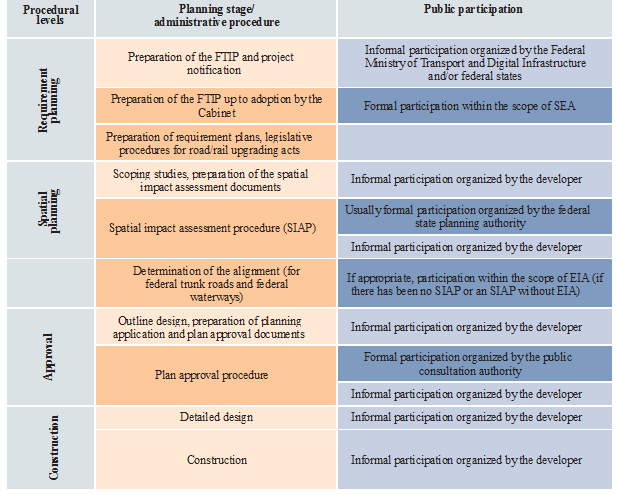
Source: BMDV
The modernisation and upgrading of our transport infrastructure are major prerequisites for prosperity and economic growth. The export of goods is of crucial importance for Germany, and it is here, perhaps more than anywhere else, that we are reliant on a good system of freight transport. And our citizens want to be – indeed, have to be – mobile, not only to get to work, education/training and the shops, but also in their leisure time. Nor is it possible to encourage more use of environmentally friendly modes of transport, such as the railways, without upgrading the relevant infrastructure. At the same time, however, transport investment frequently places a strain on people living in the vicinity of the schemes, with noise emissions being one of the main causes.
In the past, many citizens were of the opinion that they were not sufficiently included in the upgrading of transport infrastructure and above all not early enough. This led to protests and resistance, although participation is legally binding at all levels of transport infrastructure planning. In practice, however, people were frequently not reached, which meant that new forms of public participation accompanying the planning process were required.
Thus, in November 2012, the Ministry published the "Manual for Good Public Participation in the Planning of Major Projects in the Transport Sector", which can be downloaded in German and English. It is addressed to all those who have responsibility in the sphere of planning and approval procedures and to the general public. It contains proposals as to how existing formal participation (highlighted in dark blue in the following illustration) at the various procedural levels can be improved and complemented by informal participatory steps (light blue).

Source: BMDV
The manual makes practical proposals for delivering timely and continuous public participation. The formal participation involves, for instance, making the legally required public exhibition of planning documents more citizen-friendly (for instance publication on the Internet, citizens' surgeries), conducting a public local inquiry as part of the spatial planning procedure as well, and making the procedure as a whole transparent. As far as informal participation is concerned, it is proposed, for instance, that the stakeholders who are to participate be identified before the procedure commences, that a project-related strategy for participation be drawn up and that the public also be appropriately included in planning activities before the formal planning stages (publications on the Internet, public participation events, etc.).
However, decisions as to what instruments are to be used and at what time must be taken on a case-by-case basis, depending on the situation on the ground. Rigid requirements are of no use here. Every project is different. There is no "one size fits all" solution.
The manual is based on an analysis of various transport projects that have involved informal public participation. In the spring of 2012, the Ministry conducted an extensive consultation exercise on the draft manual. This included an online consultation that was open to all members of the public.